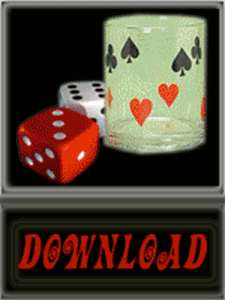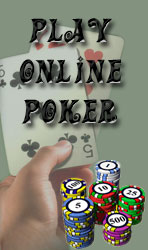Pokerwiner.com → Lessons of poker
In holdem poker game, any time an opponent bets, calls, or raises, good players ask, “What could my opponent have done that with?” Then they think of the various hands the opponent might have to do what he did.
So when your opponent called your bet on the flop and then checked on fourth street, you try to determine what hands he might have that prompted him to play the way he did.
Your opponent could be slow playing a better hand than yours – say, K, 9 or 6, 6. You estimate there’s a 25 percent chance he has such a hand.
He might have a fairly good hand such as K, J or K, 10.
You figure those hands at 25 percent, too. Your opponent might have a mediocre hand like K, 4 or 10, 10.
The chances of those hands you put at 35 percent. And you figure there’s a 15 percent chance your opponent has 8, 7 and is drawing to a straight.
You know that if you bet on fourth poker street after his check, your opponent will probably call with his fair hands, with a straight draw and at least call with his big hands.
However this player will probably fold his mediocre hands because the pot is not big enough to justify calling with them.
Therefore, after your opponent checks on fourth street, it turns out the correct play may be to check it right back.(*12 Changes in the structure of holdem since this was first written has made this play debatable. However, the thinking process behind it remains valid.)
Your intentions are to bet on the end if your opponent checks and call if he bets.
The rationale for this play is that, like many players, this opponent will fold his mediocre hands if you bet on fourth street to avoid having to call twice to see what you have.
Your checking on fourth street makes it easier for him to call on the end, not only because you have made it cheaper but also because you have shown weakness. Finally, checking on fourth street induces a bluff on the end.
The drawbacks to checking on fourth street are:
1. It gives your opponent a free card to outdraw you.
2. There’s a 25 percent chance your opponent has a hand like K, J or K, 10, with which he would probably call twice.
It is important that the pot be small say, under $60 in a $10-$20 game to make checking right because you gain only one bet by checking an betting on the end into your opponent’s mediocre hands, but you lose the whole pot if the free card gives your opponent the best poker hand.
Notice that the percentages support checking as the correct play on fourth street.
Opponent’s Possible Hands |
Approximate |
Best Play |
Better than Yours |
25 percent |
Check |
Mediocre hand |
35 percent |
Check |
Fair hand (K, J or K, 10) |
25 percent |
Bet |
Straight Draw |
15 percent |
Bet |
Because you expect your opponent to fold his mediocre hands if you bet on fourth street, and you want to win at least one more bet from those poker reading hands, the correct play 60 percent of the time is to check.
It is correct to bet only 40 percent of the time. You usually pick the play that is likely to be right most of the time:
Therefore, you check.



